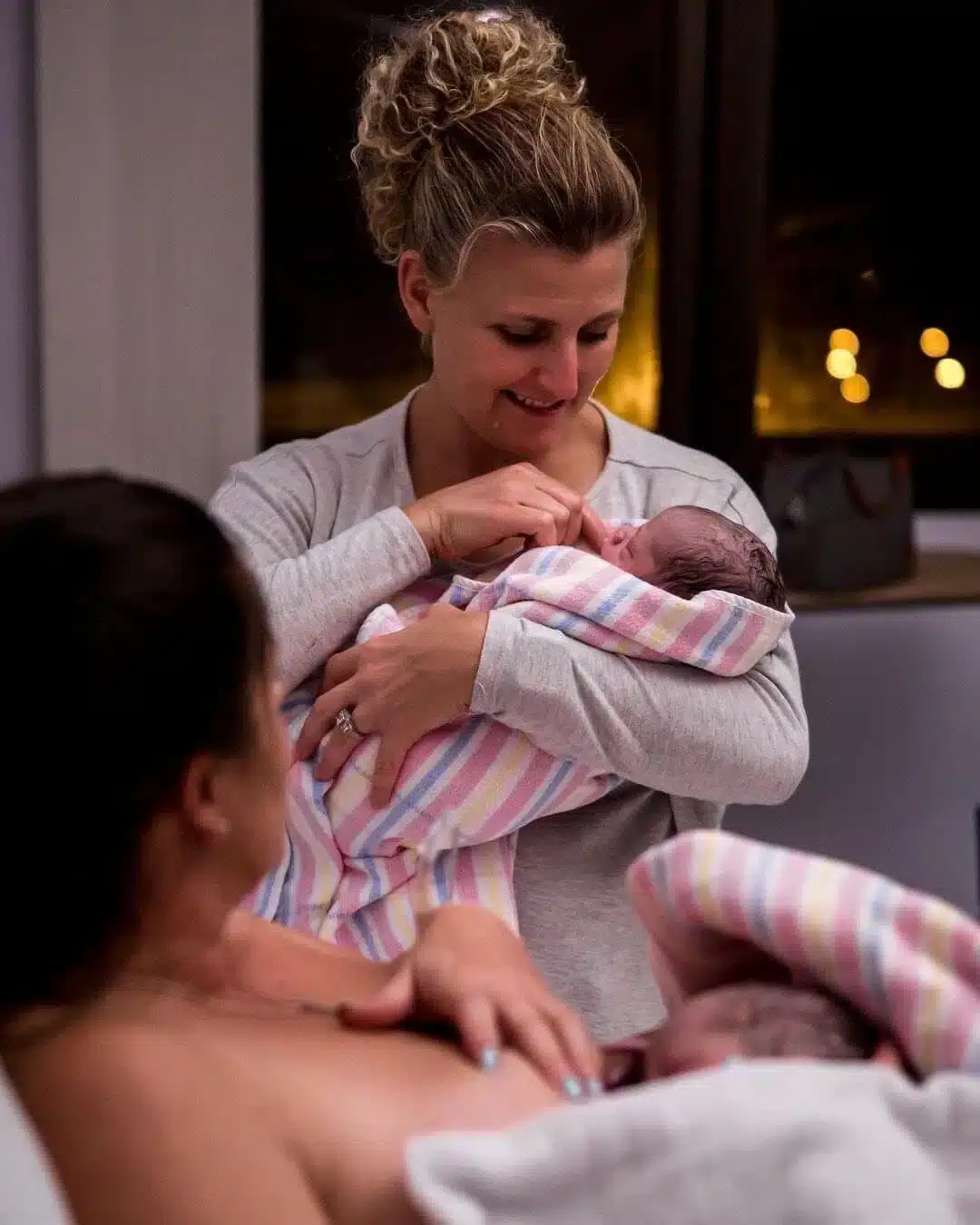Pregnancy How to Navigate Paid Parental Leave and Childcare Subsidies
How to Navigate Paid Parental Leave and Childcare Subsidies

Getting your head around your pregnancy care options can be challenging but add in the intricacies of Paid Parental Leave (PPL), Centrelink and childcare subsidies and you’ll be ready to pull your hair out. Rest assured that it’s not as complicated as it may seem but organising it early in your pregnancy is definitely recommended for both prompt payment and peace of mind.
Make sure you listen to episode 401 with Georgie Dent, executive director of advocacy organisation, The Parenthood, who takes you step by step through your financial entitlements – both from your employer and the government – and discusses the importance of flexible work for parents and accessible early education for children under five.
For now, here’s five answers to frequently asked questions about Paid Parental Leave:
What is Paid Parental Leave (PPL)?
Available to parents who have birthed or adopted a child, PPL is a government-funded entitlement to help with expenses while you care for a newborn. From July 1st, 2023, Australian families are entitled to 20 weeks PPL at the minimum wage (18 weeks for the birthing parent or primary carer, 2 weeks for the other). If you’re employed, even if your employer doesn’t offer any additional paid parental leave, they will pay you the government-funded scheme; it will come from your employer but they get the money from the federal government.
Am I eligible for Paid Parental Leave?
If you are employed or own a business, you meet the income test and you’re not working after the birth or adoption of your baby, you are eligible. You can get it for up to 18 weeks (your partner for 2 weeks) and this can be at the same time as paid or unpaid leave from your employer.
Do you have to get the payment immediately after birth?
There is flexibility with the payment from 1st July 2023 and may look like: an initial 12-week period must be taken as a continuous fixed block during the 12 months following the birth or adoption; and a six-week flexible period that can be taken within two years of the birth or adoption in the way that works best for the birth mother or primary carer.
How do I register with Centrelink?
You (and your partner, if you have one) will need to register for a Centrelink Reference Number (CRN) in order to claim PPL. It’s best to do this early in your pregnancy as it can be a complicated process that takes time. Register at servicesaustralia.gov.au. You can start your claim up to 3 months before your child’s birth or adoption. To get the full amount, you must claim within 12 months of your child’s birth or adoption.
Will the payment continue to increase each year?
Paid Parental Leave is a minimum wage entitlement. The paid leave available to parents in Australia is one of the least adequate PPL schemes among OECD nations and there is advocacy to extend it to one year for the benefit of parents, babies and families. The length of PPL will increase every financial year by 2026, where parents will be eligible for 26 weeks of paid parental leave.
Bank Australia is a customer-owned bank and they believe in supporting communities around the country. They commit up to 4% of their annual after-tax profit to their impact fund and every year, they use part of that fund to create community customer grants which are available to organisations who are creating change. Bank Australia invests in the people and groupsthat need it most. Making a positive social impact is a priority, so they support the organisations that aim to prevent family violence and provide a safe space for women and children experiencing domestic violence. Bank Australia works towards a fair, equal and welcoming country and they do that by supporting grassroots organisations in your local community. To make the shift with 180,000 other Australians head to bankaustralia.com.au/birth
Categories
Related Products
-
Birth Combs: Harness Your Body’s Natural Pain Relief
$24.95Crafted from smooth, natural wood, our birth combs activate specific pressure points in your hands that trigger your body’s innate pain-relieving responses.
Get your copy of our Perineal Massage Guide in your inbox
Keep Reading
We think you might enjoy these articles

Pre-existing Diabetes and Pregnancy: What You Need to Know

Harnessing the Power of Acupressure: A Natural Approach to Preparing for Birth

Thoughtful Christmas Gifts for your Pregnant Friend.

What is Pre-eclampsia?

Non-invasive Prenatal Testing (NIPT)
@AustralianBirthStories
Follow along with us
@AustralianBirthStories
Follow along with us
@AustralianBirthStories
Follow along with us
@AustralianBirthStories
Follow along with us
@AustralianBirthStories
Follow along with us
@AustralianBirthStories
Follow along with us
@AustralianBirthStories
Follow along with us
@AustralianBirthStories
Follow along with us
@AustralianBirthStories
Follow along with us
@AustralianBirthStories
Follow along with us
@AustralianBirthStories
Follow along with us
@AustralianBirthStories
Follow along with us




